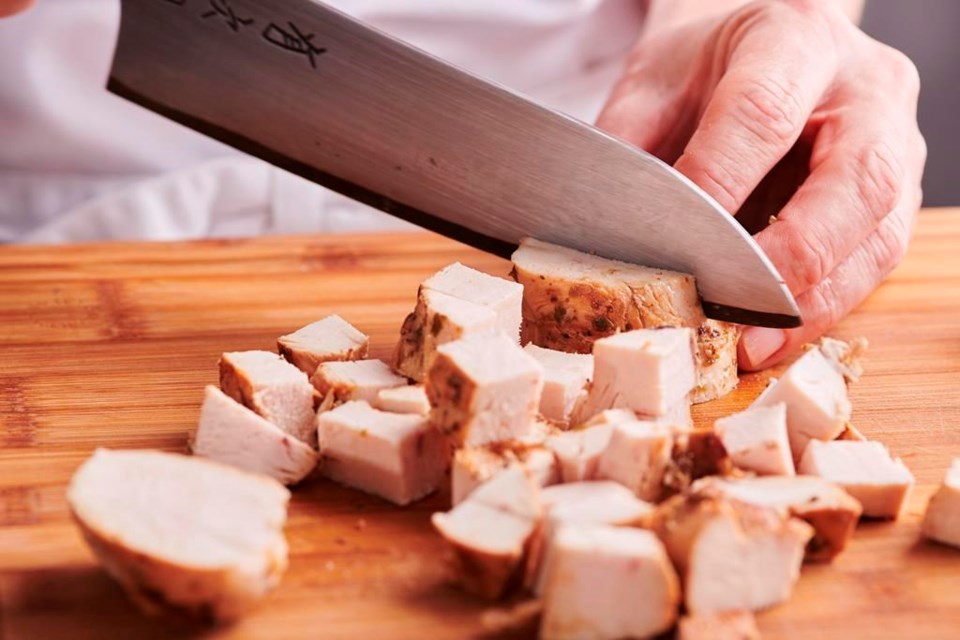Nobody likes to waste food, especially when grocery prices are high and landfills keep growing. It feels like an imperative to make use of every ingredient we buy (or maybe grow).
But about 40% of food in the U.S. is wasted, according to estimates from the non-profit Feed America and other sources. That figure includes excess from industry, grocery stores, restaurants and our very own kitchens.
There are lots of ways to reduce the amount of wasted food at home, and many are downright easy. Any step in the right direction is progress, and the results are satisfying on many levels.
Five strategies:
PLAN
A good place to start is making a meal plan and purchasing just the foods you have specific plans for. Make a shopping list and avoid impulse buys that might languish in your fridge.
When you are cooking, start thinking already about Intentional Leftovers, one of my favorite cooking mantras. Planning to use those extra cooked chicken breasts in a Mexican Tortilla Soup recipe, or those extra meatballs in a sub sandwich will prevent them from hanging out without a purpose, only to be tossed days later.
SAVE
Whenever you are trimming or peeling vegetables, give them a wash first. That way you can save those peels and scraps to make stock. Just keep a freezer-proof zipper top bag on the counter while you are cooking and add them to the bag, along with herbs that have lost their perkiness. (Don’t throw in any roots, which would make your stock gritty).
Keep the bag in the freezer, and when it’s full, dump the contents into a pot, add water to cover, season with salt and pepper, and simmer until the stock has taken on its fullest flavor before straining.
This is also a good idea for poultry scraps or red meat scraps. Keep them in separate, labeled freezer-proof bags and use them for stock when you have saved enough.
IMPROVISE
If you have a lot of odds and ends in the fridge, think about making a flexible, inexpensive dish that makes good use of bits and bobs of various foods. Frittatas, stir-fried rice, omelets, quesadillas and soups are adaptable dishes that allow you to use up things like a cup of leftover steamed broccoli, a handful of shredded cheddar, a bit of pesto, some slightly limp scallions.
See if there is a CSA (Consumer Supported Agriculture) in your town. Those organizations, usually run by farmers, deliver seasonal, locally grown produce and other items at lower costs. You have to be prepared to use what you get, so flexible cooking is the name of the game here.
A number of companies have sprung up in recent years selling “ugly” produce, that is, fruits and vegetables that are too large, too small or too irregularly shaped to hold appeal in traditional markets. These items are usually priced more affordably than their more pristine counterparts. Misfit Markets and Imperfect Foods are two examples.
ORGANIZE
Organize your fridge and pantry so you can see what you have, and avoid tossing items that you just didn’t remember were there. It is so disheartening to throw away food that you simply forgot about until it was too late. Keep super-perishable items, like fish or berries, in plain sight and use them quickly.
Do a little research on expiration dates. For instance, if a food item has a “sell by” date, that doesn’t mean you should toss it on that day. It usually means the clock starts ticking, but even items like eggs or dairy usually last for another several days or longer after the sell-by date.
A “best by” date also isn’t a definitive mark that the food is spoiled. Many items can be safely consumed for weeks after that date, without a noticeable deterioration of quality. If something looks or smells spoiled, sure, throw it out, but don’t read those dates as immutable.
Make sure you are storing your foods smartly to slow down spoilage and reduce waste. There are plenty of reusable storage options — containers, wraps, etc. — on the market. Many are geared towards a specific food type, like greens, berries, herbs, or cheeses.
Label everything in your fridge that isn’t easily identifiable.
COMPOST
Another great way to make sure food waste doesn’t end up in landfill. There are many good home composting containers available; look for one that fits into your kitchen ecosystem.
If you live in a city and don’t have a way to make use of your compost, look for somewhere to drop it off, perhaps at a local farmers market. The farmers who sell at the market often take the compost to use on their farms, completing a nice eco-cycle.
Many towns and municipalities now offer dropoff spots or curbside pickup for compost. Some offer Smart Composting Bins in various locations, where compost is collected regularly and put to use beautifying green spaces.
—-
Katie Workman writes regularly about food for The Associated Press. She has written two cookbooks focused on family-friendly cooking, “Dinner Solved!” and “The Mom 100 Cookbook.” She blogs at https://themom100.com/. She can be reached at [email protected].
___
For more AP food stories, go to https://apnews.com/hub/recipes
Katie Workman, The Associated Press



